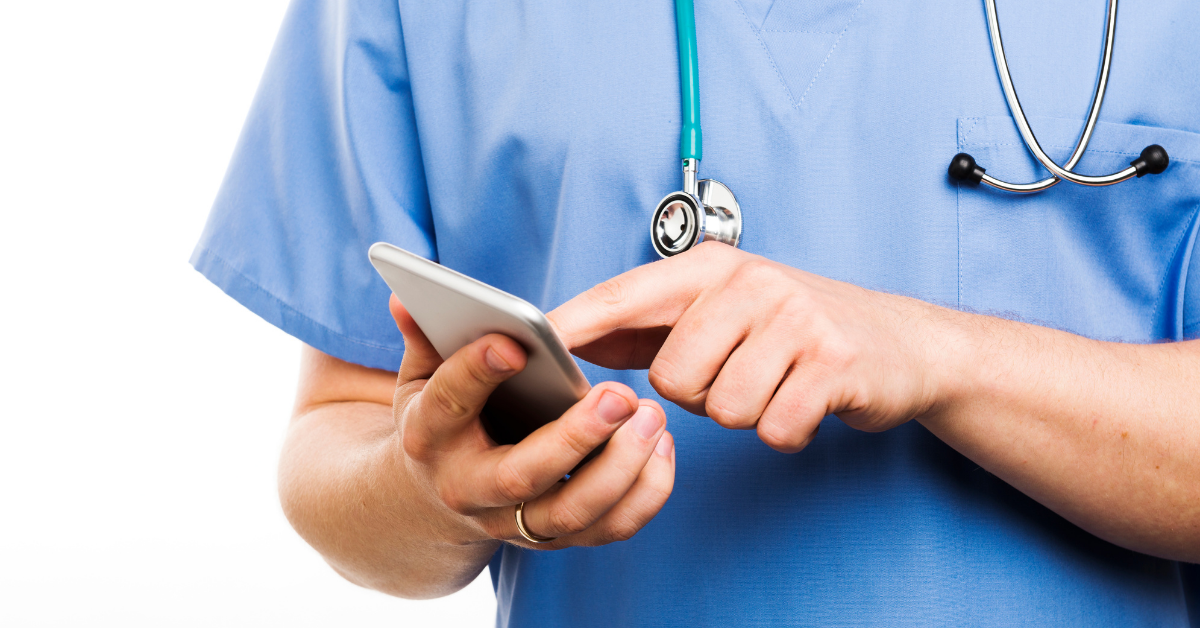Adding an app to your diabetes care routine can make it easier to track the ups and downs of your day and make care decisions. But what happens if access to that app gets disrupted?
The excitement of using a diabetes app
It’s an exciting moment when, for the first time, you log in to a diabetes app. There’s expectation. There’s hope. This new tool promises to help you manage your diabetes better.
With an app you’ll have more timely and accurate tracking of your glucose levels. This is especially true if your glucometer connects directly and auto-magically transfers your glucose readings from the meter to the app.
It will be easier to capture meals or moods or symptoms because you always have your smartphone with you. And maybe the app can capture photos of your meals or has icons for quickly logging your feelings and activities.
Maybe you have a fitness tracker that “talks” to the app, automatically recording your steps or zone minutes for the day.
The app then takes all this information and presents it in a way that is easier to understand and use. Glucose readings go from being a bunch of numbers on a grid to a plotted line that shows the ups and downs throughout your day. Average daily glucose readings are calculated and A1C levels are estimated.
And, because some of these apps save all your diabetes tracking and data, your healthcare provider can easily review your logs, sometimes almost in real-time.
It’s almost intoxicating to know that your diabetes tracking is being captured so completely and easily — especially if you’ve ever kept a log with pen and paper. Or if you’ve ever experienced the dreaded “What happened here?” question as your doctor points to some seemingly random number from weeks ago.
What happens when access to the app is disrupted?
Once we start using apps to track our diabetes it’s easy to become dependent on them. This is especially true when our devices and trackers connect directly, removing the need to enter data manually. Or when we use our apps to calculate our insulin dosing and drive other diabetes care decisions.
But there’s another side to app use in diabetes care that people often don’t think about.
What happens when access to the app or its capabilities gets disrupted? It could be a short disruption, like when you’re out of range for cell service. Or it could be an outage that lasts days or weeks, like the ones people experienced recently after big storms or wildfires knocked out electricity and cell service.
What then?
It’s best to think about these possibilities before they actually happen. That way you’ll have a chance to figure out your Plan B.
Three things to consider
With a little pre-planning you can set yourself up to keep your diabetes care on track if (or when) you find that your diabetes tech has been disrupted. Here are a few things to consider beforehand.
Really think about how you use the diabetes app
Here are some key things to ask yourself.
Do you use your diabetes app to capture data? What kind of data? If you had to, could you be without this data for days or weeks?
Do you share the data from the app with anyone? Who do you share it with? How do they use it? Can your doctor still provide the care you need if there’s gaps in what you share with them? What happens if you’re a parent who suddenly can’t see your child’s CGM readings?
Do you use the diabetes app to calculate insulin doses or drive some other diabetes care decision? Do you have another way to calculate doses or make these care decisions?
Identify what’s essential for your diabetes care
What information (that the app helps you with) do you absolutely need to keep your diabetes care on track? Tracking glucose levels and calculating insulin doses seem like they’re essential. But what about tracking meals, or steps, or stress levels?
In an extended emergency it’s likely you’ll need to make some choices and you may need to scale back what you actively track to only the essentials — whatever that means for you.
Determine alternative ways to maintain what’s essential for you
You may find yourself in a situation where you have to change up how you keep track of and manage your diabetes.
Maybe you’ll have to go back to old or less familiar ways of doing things. Manually calculating insulin doses, for instance. Or using a blood glucose meter instead of a CGM. For these situations you’ll have to prepare in advance by making sure you have the necessary supplies on hand. You may even have to have a refresher on the formula used to calculate your insulin dose.
Only you can decide how to respond to a diabetes app outage
Everyone’s diabetes care is highly personalized. What works for one person during a disruption won’t necessarily work for someone else. It’s up to you to decide what would be best for you and how to respond.
But, as app use in diabetes care becomes more common one thing becomes painfully clear: You always need to have a Plan B.


